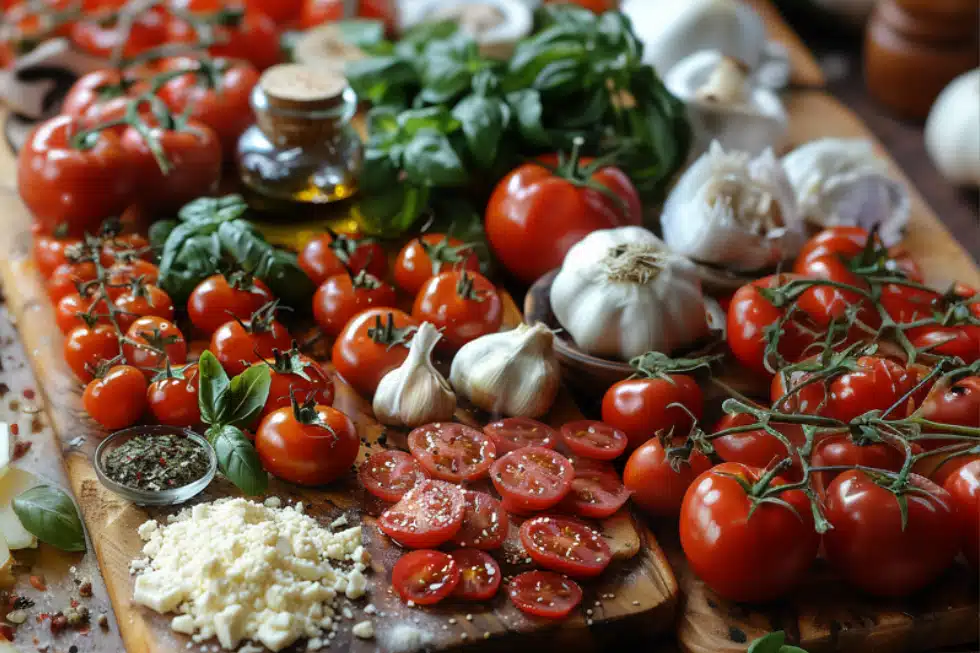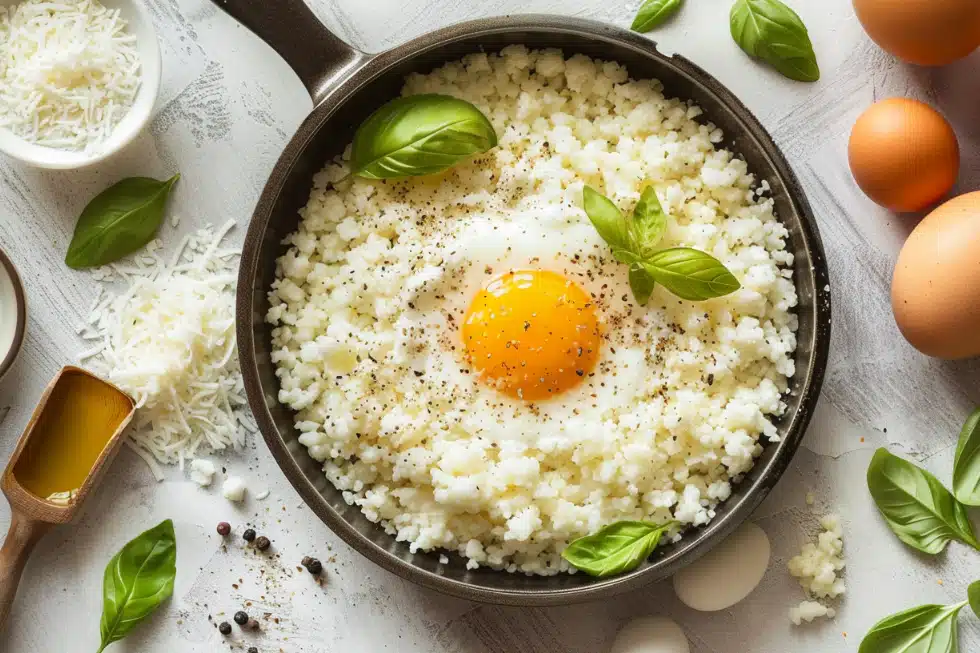Imagine biting into a slice of pizza that’s not only mouthwateringly delicious but also packed with nutritional value. This isn’t just any pizza; it’s a carefully crafted, healthy vegetarian pizza that challenges the common misconception that taste must be sacrificed for health. With the rise of health-conscious eating, more people are seeking ways to enjoy their favorite dishes in healthier ways. Pizza, a universal comfort food, tops the list for many. The good news? Making a healthy vegetarian pizza at home is not only possible, but it can also be a fun and rewarding experience.
The key to creating a pizza that’s both nourishing and satisfying lies in selecting the right ingredients. From the base to the toppings, every component can be optimized for health without compromising on flavor. In this article, we will guide you through the process of making a healthy vegetarian pizza, from choosing high-quality ingredients and preparing the perfect crust to selecting delectable toppings and mastering the cooking process. Whether you’re a seasoned chef or a kitchen novice, our step-by-step approach will help you create a pizza that’s bound to impress – both in terms of taste and nutritional content. So, let’s embark on this culinary journey together and reimagine what pizza can be.
Essential Ingredients Breakdown
Crafting a pizza that’s as nutritious as it is delicious starts with choosing the right ingredients. Our healthy vegetarian pizza will use a combination of whole foods, rich in vitamins, minerals, and other nutrients, without sacrificing the deep, satisfying flavors we all love in pizza. Here’s what you’ll need:
- Crust: For the base, consider whole wheat flour for its rich fiber content or a cauliflower crust for a low-carb alternative. Each brings its unique texture and nutritional benefits to the pizza.
- Sauce: A homemade tomato sauce, with ripe tomatoes, garlic, basil, and oregano, offers a fresh and antioxidant-rich alternative to store-bought versions. You can also experiment with pesto or a creamy butternut squash sauce for variety.
- Cheese: Opt for low-fat mozzarella, vegan cheese, or a nutritional yeast sprinkle for that cheesy flavor without the added saturated fats. These options provide the gooey texture and savory taste pizza is known for, but with a healthier twist.
- Vegetable Toppings: The more, the merrier. Load your pizza with a colorful array of vegetables like bell peppers, onions, mushrooms, spinach, and olives. Each vegetable not only adds a burst of flavor and texture but also brings its own set of nutrients to the table.
- Herbs and Spices: Don’t skimp on these as they’re packed with antioxidants and offer a way to enhance the taste without extra calories. Basil, oregano, chili flakes, and garlic powder are excellent choices.
With these ingredients, you’re set to create a pizza that’s a feast for the senses and good for your body. Next, we’ll walk you through preparing the perfect base for your healthy vegetarian pizza.
Preparing the Perfect Base
The foundation of any great pizza is its crust, and when it comes to making a healthy vegetarian pizza, the base you choose is crucial. Here’s a step-by-step guide to preparing two nutritious and delicious pizza bases: whole wheat and cauliflower.

Whole Wheat Crust
Ingredients:
- 2 cups whole wheat flour (extra for dusting)
- 1 tsp instant yeast
- 1 tsp salt
- 1 tbsp olive oil
- 3/4 cup warm water
Instructions:
Combine Dry Ingredients: In a large bowl, mix the whole wheat flour, yeast, and salt.
Add Liquids: Make a well in the center of the dry ingredients, add the olive oil and gradually incorporate the warm water. Mix until a dough begins to form.
Knead the Dough: Transfer the dough to a floured surface and knead for about 10 minutes, or until it’s smooth and elastic. Add a little more flour if the dough is too sticky.
Let it Rise: Place the dough in a lightly oiled bowl, cover with a damp cloth, and let it rise in a warm place for about 1 hour, or until doubled in size.
Pre-bake the Crust: Preheat your oven to 425°F (220°C). Roll out the dough on a floured surface to your desired thickness, then place on a baking sheet or pizza stone. Pre-bake the crust for about 10 minutes before adding toppings.
Cauliflower Crust
Ingredients:
- 1 head of cauliflower, riced (about 2 cups)
- 1 egg, beaten
- 1/2 cup shredded mozzarella cheese (low-fat or vegan alternative)
- 1 tsp oregano
- Salt and pepper to taste
Instructions:
Prep the Cauliflower: Pulse cauliflower florets in a food processor until it resembles rice. Steam the riced cauliflower for about 5 minutes, then let it cool.
Squeeze Out Moisture: Wrap the cooled cauliflower in a clean kitchen towel and squeeze out as much moisture as possible.
Mix Ingredients: In a bowl, combine the dried cauliflower, egg, cheese, oregano, salt, and pepper.
Form the Crust: Press the mixture onto a baking sheet lined with parchment paper, shaping it into a round pizza base.
Bake: Preheat your oven to 425°F (220°C) and bake the crust for 20-25 minutes, or until it’s golden and firm.
With either crust, you have the perfect canvas for your healthy vegetarian toppings. Each base offers a unique taste and texture, complementing the fresh flavors of your chosen toppings.
Layering Flavors: Toppings for Your Healthy Vegetarian Pizza
A great pizza is all about the harmony of flavors, and with a vegetarian pizza, you have a canvas that invites creativity. Here’s how to choose and prepare toppings that elevate your pizza from good to unforgettable.

Customization Tips and Serving Suggestions
Vegetarian lentil soup is incredibly versatile, making it easy to adapt to your taste preferences and dietary needs. Here are some ideas for customizing and serving your soup:
Spice It Up: Experiment with different spices to change the flavor profile of your soup. Cumin, coriander, and curry powder can add a warming, exotic twist.
Vary the Vegetables: Feel free to add other vegetables like spinach, sweet potatoes, or bell peppers for extra nutrition and flavor.
Try Different Lentils: Each type of lentil (red, green, brown) offers a different texture and cooking time. Red lentils tend to cook faster and are great for a creamier soup, while green and brown lentils maintain their shape and texture better.
Protein Boost: For an extra protein punch, you can add chickpeas, beans, or tofu.
Serving Suggestions: Serve the soup with a dollop of yogurt, a sprinkle of grated cheese, or a side of crusty bread. These additions not only enhance the taste but also make the meal more satisfying.
With these tips, you can easily tailor your vegetarian lentil soup to suit your preferences or to simply try something new each time you make it.
Sauce
Start with the sauce, a critical layer that sets the tone for your pizza. Our homemade tomato sauce is a simple yet flavorful choice:
- Tomato Sauce: Blend ripe tomatoes with garlic, olive oil, salt, and basil for a fresh foundation. For something different, try blending roasted red peppers with tomatoes for a smoky flavor.
Cheese
Next, the cheese. While traditional pizzas are heavy on cheese, our approach balances taste with health:
- Low-Fat Mozzarella: Offers the classic pizza cheese experience without the guilt. Alternatively, vegan cheeses have come a long way in texture and taste.
- Ricotta or Cottage Cheese: Dots of these can add creaminess with less fat.
- Nutritional Yeast: For a cheese-free sprinkle that adds a cheesy flavor plus a vitamin B boost.
Vegetables
The real stars of our pizza are the vegetables. They’re not just fillings; they’re flavor bombs:
- Spinach and Kale: Lightly sauté these with garlic for a nutrient-packed topping.
- Mushrooms: Offer a meaty texture. Try different varieties like shiitake or portobello for deeper flavors.
- Artichokes and Olives: Bring a Mediterranean flair with their unique tastes.
- Bell Peppers and Onions: Roast these for a sweet and smoky addition.
The Vegetarian Diet is a plant-based eating pattern that excludes meat, poultry, and seafood. This dietary choice can offer a wide range of health benefits, such as a lower risk of heart disease, improved weight management, and reduced environmental impact.
Extra Flavors
Don’t forget the finishing touches. Fresh herbs, a drizzle of quality olive oil, or a sprinkle of chili flakes can add dimension to your pizza.
Assembly Tips
- Balance is Key: Avoid the temptation to overload your pizza. A well-distributed layer of each topping ensures every bite is perfect.
- Pre-Cook Certain Toppings: Vegetables like spinach and mushrooms release water, so pre-cooking them slightly can prevent a soggy base.
By thoughtfully selecting and preparing your toppings, you create a pizza that’s a feast for the senses, bursting with flavors and textures that make every bite a delight.
Step-by-Step Cooking Guide
With our crust prepared and toppings selected, it’s time to bring everything together and bake our healthy vegetarian pizza to perfection. Follow these steps to ensure your pizza is not only delicious but also retains the nutritional integrity of its ingredients.
Preparing for Assembly
Preheat the Oven: Heat your oven to its highest setting, typically between 475°F to 500°F (245°C to 260°C). A hot oven is crucial for a crispy crust.
Prep Your Toppings: Have all your toppings pre-cooked (if necessary) and ready to go. This includes your sauce, cheese, and vegetables.
Assembling Your Pizza
The Base: On a lightly floured surface, roll out your crust to the desired size. If you pre-baked your crust, it’s ready for toppings. If using raw dough, you may want to pre-bake it for 5-10 minutes before topping.
Spread the Sauce: Apply a thin layer of your homemade sauce evenly across the crust, leaving a small border around the edges.
Add Cheese: Sprinkle your choice of cheese (or cheese alternative) over the sauce. Remember, less is more. You want to complement the flavors, not overpower them.
Arrange the Toppings: Evenly distribute your vegetables and any other toppings across the cheese layer. Consider the balance of flavors and textures as you go.
Baking Your Pizza
Bake: Place your pizza in the oven. Bake for 10-15 minutes or until the crust is golden and the cheese is bubbly and starting to brown.
Cool and Serve: Let the pizza cool for a few minutes before slicing. This resting time allows the cheese to set and makes the pizza easier to slice.
Tips for the Perfect Bake
- Use a Pizza Stone or Baking Sheet: A pizza stone can help absorb moisture and distribute heat evenly, but a pre-heated baking sheet works well too.
- Monitor Closely: Given the high oven temperatures, keep an eye on your pizza to prevent burning.
- Experiment with Broiling: For an extra crispy top, consider broiling your pizza for the last minute or two of cooking.
By following these steps, you’ll ensure your healthy vegetarian pizza is not just a joy to make but a delight to eat, offering a perfect blend of crispy crust, melty cheese, and flavorful toppings.
Conclusion
Embarking on the journey of making your own healthy vegetarian pizza at home is more than just about preparing a meal; it’s about redefining what pizza can be. This culinary adventure allows you to blend the art of traditional pizza making with the principles of nutritious eating, creating a dish that is as satisfying to the palate as it is beneficial to your health. By choosing whole, nutrient-rich ingredients and following our step-by-step guide, you’ve transformed a classic comfort food into a modern healthful feast.
The process of selecting the perfect base, layering it with a rich tapestry of flavors, and mastering the bake is a testament to the creativity and care that goes into healthy cooking. Whether it’s the wholesome crunch of the whole wheat crust, the aromatic allure of freshly prepared toppings, or the visual feast of vibrant vegetables, every element of this pizza serves to elevate your dining experience.
As you slice into your homemade vegetarian pizza, remember that each bite is a celebration of good health, great taste, and the joy of cooking from scratch. May this recipe not only nourish your body but also inspire you to explore further the delicious possibilities of healthy eating. Bon appétit!












